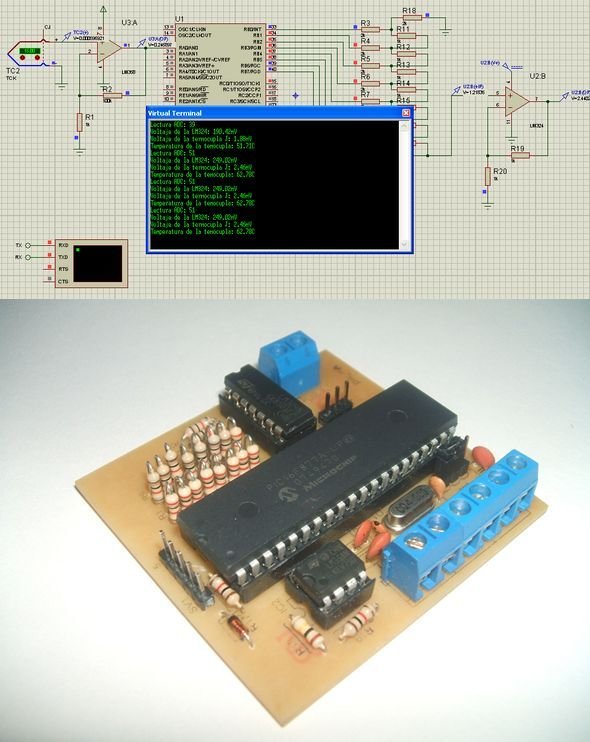Thermocouple reading circuit PIC16F877 microcontroller based on the C source software, isis proteus simulation files and eagle diagram, printed circuit boards have drawings. Thermocouple voltage 0V (0 ° C) and 42.92mv (760 º C)… Electronics Projects, Thermocouple Reading Circuit PIC16F877 “microchip projects, microcontroller projects, pic16f877 projects, “
Thermocouple reading circuit PIC16F877 microcontroller based on the C source software, isis proteus simulation files and eagle diagram, printed circuit boards have drawings. Thermocouple voltage 0V (0 ° C) and 42.92mv (760 º C) 4.8mv (5/1024) on a PIC16F877 8-bit resolution ADC resolution 10bits DAC.
THERMOCOUPLE GENERAL INFORMATION
Thermocouples -200 ° to 2320 ° C is widely used in various processes. Thermocouples two different metal alloys, obtained by welding the ends of the temperature measurement element. The point boiled HOT SPOT , the remaining two open ends COLD SPOT is called. With thermocouple cold junction temperature difference between the hot spot is formed. Proportional to the temperature difference voltage in mV at the ends of the cold spot is produced. With hot spot no matter how cold spot temperature distribution of the generated voltage is proportional to the temperature difference between the hot and cold spots
Source: THERMOCOUPLE READING CIRCUIT PIC16F877 alternative link: thermocouple-reading-circuit-pic16f877.rar alternative link2 alternative link3


